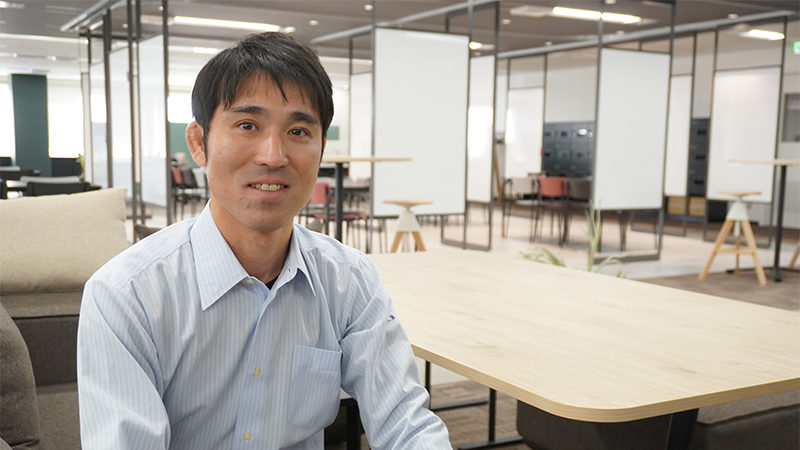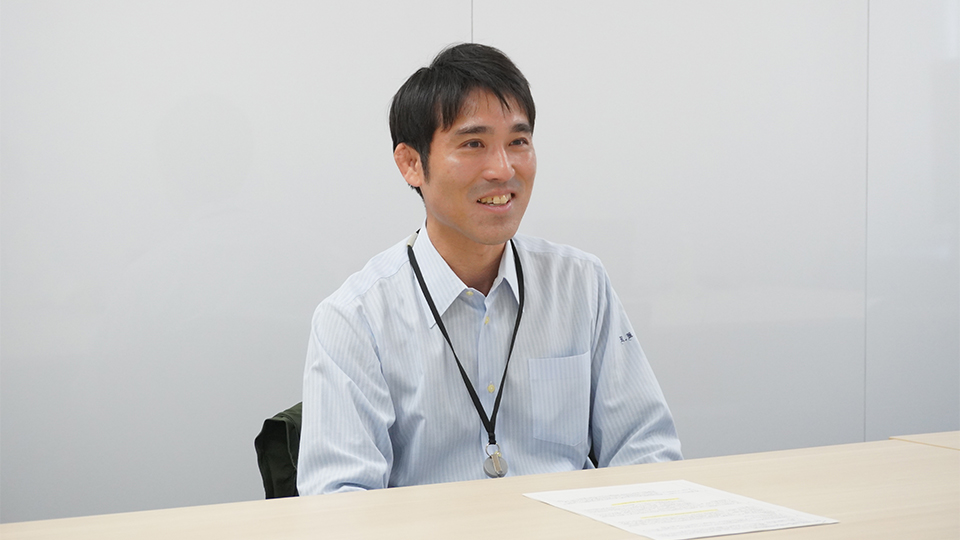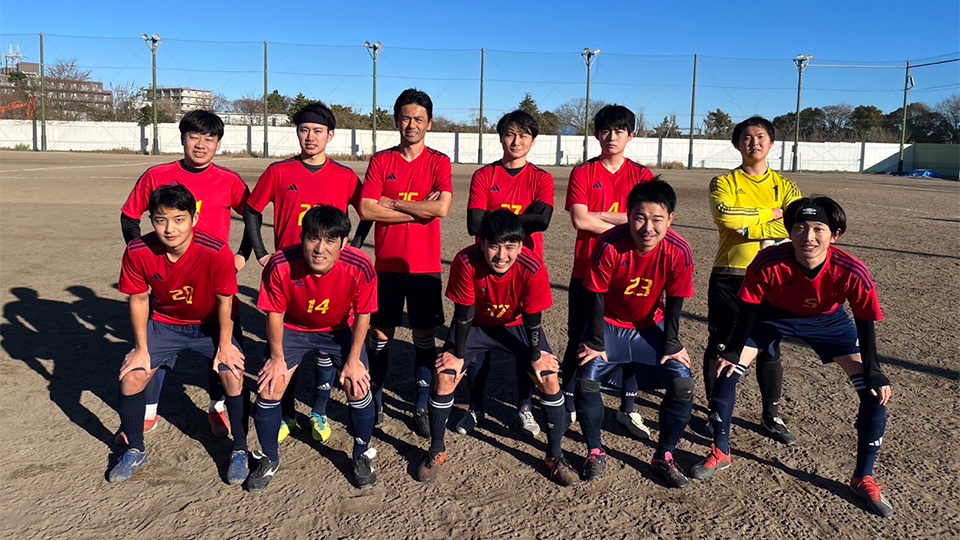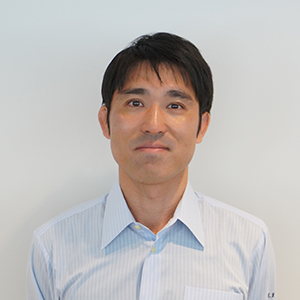A fulfilling career in cutting-edge network technology – personal insights from a leading researcher
Tatsuya KikuzukiArtificial Intelligence Laboratory

Making the jump from materials physics to telecommunications
During my university years, I specialized in materials physics and often spent many hours conducting experiments in physics and chemistry. I found it immensely enjoyable to formulate hypotheses and conduct experiments to verify them, as well as to analyze phenomena and express them mathematically, for example, predicting the trajectory of a ball. What I had previously calculated on paper in high school physics, I now observed in real-life scenarios, considering reasons for any discrepancies between calculation and observation. This hands-on experience provided me with an exciting new dimension of excitement beyond mere calculations on paper.
I chose materials physics, because of my inherent interest in physics as a subject and my belief that innovations in materials can bring about significant changes in the world. For instance, I believed that if superconductivity could be achieved, it would revolutionize the world's energy problems, enabling power generation even in places like the Sahara Desert, among various other possibilities.
While my fundamental beliefs remain unchanged, I found the whole internet experience a real game-changer, particularly with respect to the potential for telecommunications innovation to bring about significant societal changes. Consequently, during my job search, I sought opportunities in the field of telecommunications rather than staying within the realm of materials physics, leading me to join Fujitsu. In the field of telecommunications, many problems can be solved through simulation, and the iterative process of hypothesis formulation and verification until results are obtained appealed to my love of puzzle-solving.

Developing a highly reliable and low power combat training system
After joining the company, I was involved in the development of a combat training system. The goal was to adapt a highly reliable and energy-efficient wireless protocol that was originally developed for medical and healthcare purposes to a training system designed for combat scenarios with adversaries. Transitioning from an environment where discussions were confined within the research laboratory to directly engaging with business units and clients was a remarkable experience for me in this project.
The training sessions are not limited to a few hours; they can span several days. Therefore, it is not practical to carry charging equipment, and it is necessary for the devices to operate for long periods without recharging. Additionally, in the event of gunfire during the training, the system must promptly determine which side was shot first within tens of milliseconds, accurately reflecting critical moments that could be life-threatening in real combat situations. Utilizing wireless communication, meeting stringent requirements such as low power consumption and minimal latency, necessitated detailed discussions to understand the specific needs and requirements thoroughly.
The joy of collaboration – advancing technical design with customers and business units
We worked tirelessly to meet these requirements. Regarding the challenge of power consumption, a separate team worked on its development, while our team was responsible for addressing latency issues, and we were able to come up with a clever receiving design. In wireless protocols, there are time slots where packets transmitted within the slot are receivable, but those transmitted outside of the slot are not. With a simple receiving design, if someone was shot during a time when reception was not possible, detection would be impossible for that period, say 1 or 2 seconds. To eliminate this reception delay, we divided the slots into very fine intervals, redesigning them so that transmitted packets could be received within any slot. This achieved a delay time 1/10 of the conventional delay. Additionally, as the technology was at a research level of maturity, we incorporated design considerations for special cases, elevating it to a practical level while learning development methodologies.
Although it was a first-time challenge, it was not enough to simply learn; we were required to produce output while learning simultaneously, which was quite challenging. However, the moment when we collaborated with customers and business units to complete a satisfactory basic design was truly inspiring. Through these experiences, I felt that I was getting closer to the vision I had during my job search – namely changing the world through network communication technology. Despite numerous difficulties, the joy of gradually approaching the envisioned outcome became the strength that helped us overcome them one step at a time.
Learning from soccer to overcome setbacks
My hobby is soccer. I started playing at a young age due to the influence of my father and close friends, and I continue to play to this day. One unforgettable experience is the last soccer tournament of my third year in high school. As soccer club members left one by one for exam preparation, we experienced the bitter disappointment of losing to opponents we could have beaten with our previous team members. That regret stayed with me, leading me to join the soccer club in university to improve my skills further. Currently, I am an active member of the Fujitsu soccer team, practicing at the Fujitsu Kawasaki Gymnasium once a week and aiming for city tournaments and beyond. Apart from soccer, I spend time with my family and enjoy activities like golf, mahjong, and gaming with friends. These moments are crucial for both physical and mental well-being, as well as for maintaining communication with others.

Utilizing AI to advance networks
Currently, I am involved in research and development aimed at enhancing networks using AI. Network failures have been a significant challenge over the years, and I have been tackling this issue through design, observation, and analysis techniques. The use of networks, including wireless networks, continues to advance and diversify, leading to increasing complexity in their structure and requirements. My goal is to create a world where networks can automatically address failures, no matter how advanced or diversified they become. With the evolution of AI technology, I strongly believe in the possibility of realizing this dream. AI technologies such as large-scale language models are evolving rapidly, and while keeping up with them as a researcher is challenging, I take great pleasure in constantly engaging with new technologies. Contributing to society by involving myself in new technologies and leveraging them to provide value is what brings me happiness.
Messages from colleagues
Tatsuya is someone who "thinks carefully without being swayed by outside forces," in other words, a person who can perceive things without preconceptions and think deeply. With his leadership skills learned from soccer, he has become a strong and reliable presence, leading the team both proactively and responsively with balance. (Kaoru Yokoo, Artificial Intelligence Laboratory)
Tatsuya has the reassuring ability to find answers to any difficult question. While Tatsuya’s presentations are densely packed with ideas and may not be easily understood at first glance, his passion for the subject always excites me. I look forward to seeing how the network he has dreamed of will be realized. (Teruhisa Ninomiya, Research Transformation Office)

Titles, numerical values, and proper nouns in this document are those reported when this interview was made.




